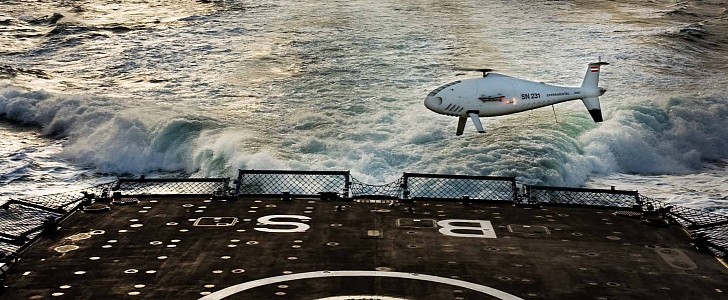Modern aviation technology is being used for the benefit of the maritime environment as well. Over the next few months, an unmanned air system (UAS) equipped with special technology will conduct monitoring flights over the Baltic Sea for a new European Maritime Safety Agency (EMSA) project.
EMSA is collaborating with the Federal Maritime and Hydrographic Agency in Germany on a campaign for monitoring Sulphur emissions. During the next three months, a remotely-piloted aircraft will be flying over the Baltic Sea, using special equipment to do two things. On one hand, it will measure the Sulphur content in the exhaust plumes of ships. On the other hand, it will capture high-quality images for hydrographic surveys.
This campaign is not for pure research, but it will have real and immediate effects. There are regulations that establish the maximum amount of Sulphur emissions that a ship’s fuel can produce. During this campaign, the drone will detect any violations of the legal limits, in which case the vessels’ operators risk serious penalties.
The drone used by EMSA is Schiebel’s Camcopter S-100. With a 200-km (124-mile) range, this UAS is designed for ruggedness and reliability. It doesn’t require special areas for take-off and landing, it can operate day and night, and it can withstand challenging weather conditions, whether it’s flying over the sea or land. It can be piloted remotely, but according to Schiebel, its complex avionics allow it to complete missions completely automatically, even in complex electromagnetic environments.
For this EMSA project, the drones will be operated by Nordic Unmanned, a Norwegian company. The advanced sensors and technology for emission measurements are provided by Explicit ApS, a Danish company.
Besides measuring the exhaust gas emissions for selected vessels transiting the Baltic Sea, the drone will also provide three-dimensional mappings of certain areas. That’s because the German hydrographic surveying service could benefit from such missions in the near future.
The remotely-piloted aircraft is set to kick off its mission later this month.
This campaign is not for pure research, but it will have real and immediate effects. There are regulations that establish the maximum amount of Sulphur emissions that a ship’s fuel can produce. During this campaign, the drone will detect any violations of the legal limits, in which case the vessels’ operators risk serious penalties.
The drone used by EMSA is Schiebel’s Camcopter S-100. With a 200-km (124-mile) range, this UAS is designed for ruggedness and reliability. It doesn’t require special areas for take-off and landing, it can operate day and night, and it can withstand challenging weather conditions, whether it’s flying over the sea or land. It can be piloted remotely, but according to Schiebel, its complex avionics allow it to complete missions completely automatically, even in complex electromagnetic environments.
For this EMSA project, the drones will be operated by Nordic Unmanned, a Norwegian company. The advanced sensors and technology for emission measurements are provided by Explicit ApS, a Danish company.
Besides measuring the exhaust gas emissions for selected vessels transiting the Baltic Sea, the drone will also provide three-dimensional mappings of certain areas. That’s because the German hydrographic surveying service could benefit from such missions in the near future.
The remotely-piloted aircraft is set to kick off its mission later this month.






